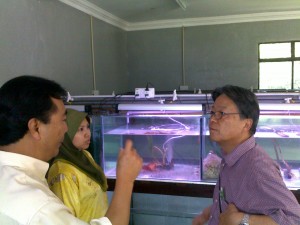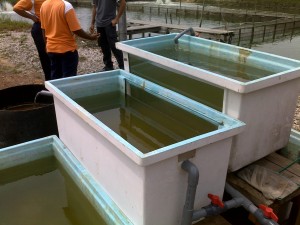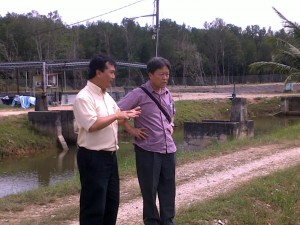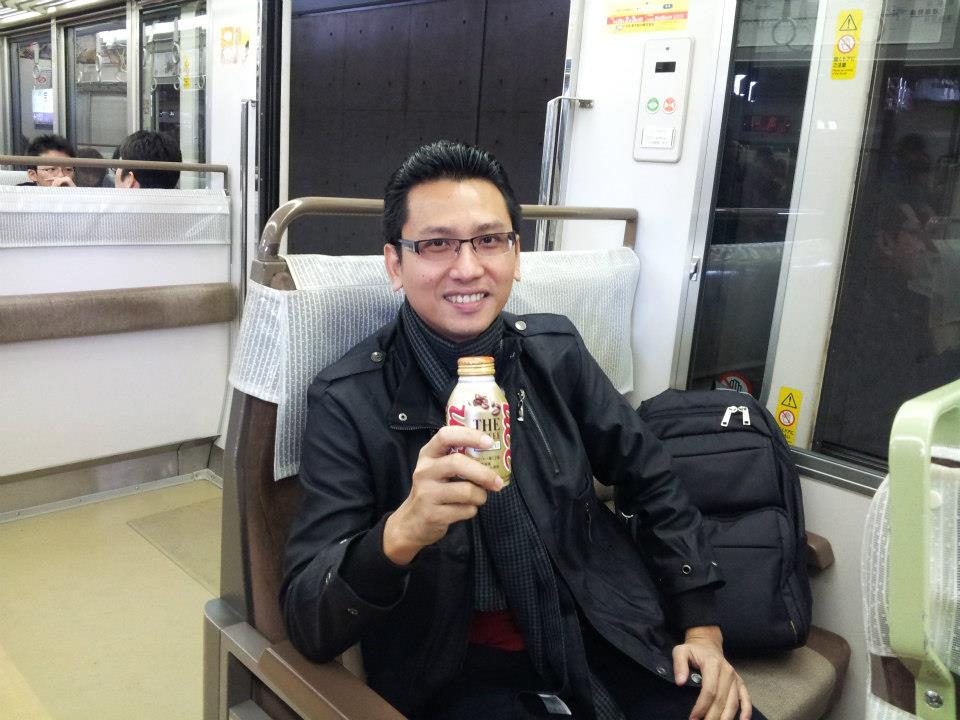BIOREMEDIATION OF SHRIMP POND EFFLUENT USING SEAWEEDS AND BIO-FILTER TO PROMOTE ZERO DISCHARGE EFFLUENT SYSTEM
Present intensive shrimp farming methods result in the discharge of significant amounts of nutrients into adjacent waterways. A high proportion of these nutrients originate from the commercial feed (Briggs and Funge-Smith, 1994). This is especially the case for nitrogen (N), due to the high protein content of shrimp feeds (i.e more than 40 % protein for commercial tiger shrimp (Penaeus monodon). Previous studies of intensive shrimp farms in Thailand found that only 21% of the shrimp feed N was recovered as harvested shrimp while 35% was discharged to the environment (Briggs and Funge-Smith, 1994). Likewise, studies of semi-intensive farms in Honduras showed that 72% of the N entering the ponds was discharged to the environment as a result of water exchange (Teichert-Coddington et al., 2000). The discharge of waste N from shrimp farms directly into adjacent environments has raised concerns globally about adverse environmental impacts stemming from such practices (Naylor et al., 2000).
Reducing the negative environmental impacts associated with aquaculture activities is a key to ensuring the long-term sustainability of the industry. One potential avenue is the increased use of land-based recirculating aquaculture systems (RAS). Such systems allow more effective control of culture conditions, and permit many negative impacts on the surrounding environment to be minimised (Piedrahita, 2003). Waste products can be contained within the facility, habitat degradation is decreased or eliminated and decreased interaction between culture organisms and wild organisms prevents spread of disease or escape of exotic species (Emerson, 1999). However, the accumulation of nitrogenous wastes is a major drawback of RAS (Wright, 1995). Therefore, some form of filtration is required to keep these wastes below the levels that cause biological and economic harm.
Traditionally, biofilm filtration has been employed to control ammonium concentrations (Greiner and Timmons, 1998). Such systems exploit the action of Nitrosomonas and Nitrobacter bacteria (Watten and Sirbrell, 2006), which work in tandem to oxidise highly toxic ammonium to largely inert nitrate in a two part process. However, this system has several disadvantages because i) nitrifying bacteria compete with the culture species for oxygen (Greiner and Timmons, 1998) ii) nitrate can be converted to the highly toxic compound nitrite under anoxic conditions (Watten and Sirbrell, 2006) and iii) systems using biofilm filtration typically acidify over time due to respiration of both the culture species and the biofilm (Van Rijn, 1996).These factors can all contribute to decrease on survival, growth and reproduction of the culture organism. Additionally, the complexity of any biofiltration comes at a significant financial cost. It is this added cost that has prevented bacterial-based intensive aquaculture technologies from producing large quantities of fish or shrimp at competitive prices. Furthermore, while bacterial biofilter technologies are suitable for relatively small intensive land-based cultures of high-valued fish species, to date, there is no information available as to how such technologies can be integrated into large-scale low-cost fish or shrimp production in ponds.
Scope of Study
The research work will be conducted at Fisheries Research Institute (FRI), Gelang Patah.The main aim of the study is to treat the shrimp pond effluent to maintain adequate water quality for shrimp culture. In order to achieve the target of zero discharge effluent, study will be undertaken into two phases.
Fisrt phase: The first phase of the experiment is to evaluate potential of locally available Gracilaria sp. i.e Graciliaria edulis and Gracilaria changii for bioremediation of nutrient from shrimp pond. The experiment will be conducted outside the laboratory so that the light and temperature conditions would be similar to those in the field. The seaweeds will then be introduce into the mini set-up of seaweed tank recirculating system that will be fabricated at the FRI, Gelang Patah. The re-circulating water system consists of fibreglass tanks, seaweeds and bio-sand filter. This on-site treatment system will pump the shrimp pond effluent via bio-sand filter (BSF) to the seaweed culture tanks. BSF will helps to reduce the turbidity, suspended solid of the pond effluent and also the problem of epiphytes in the seaweeds culture tanks. BSF is a biological filter using natural and cheap filtering materials such as gravels and sand. The system will consistently maintain its continuous flow by recirculating the effluent of shrimp pond to seaweeds tanks to ensure it obtain sufficient nutrient for growth besides acting as a biofilter. Nutrients and targeted pollutants absorbed by the seaweed will be monitored and analysed.
Second phase. Once the first phase experiments completed, then, the study will be carried out in a pilot scale system. In the pilot scale system , a shrimp ponds with an area of 0.25 ha will be used. The size of the seaweeds pond and bio-sand filter will be calculated base on the result of the first phase experiment. The experiment will be conducted for a period of four month i.e. one culture cycle. The water quality parameters will be monitored weekly.
Pages: 1 2



